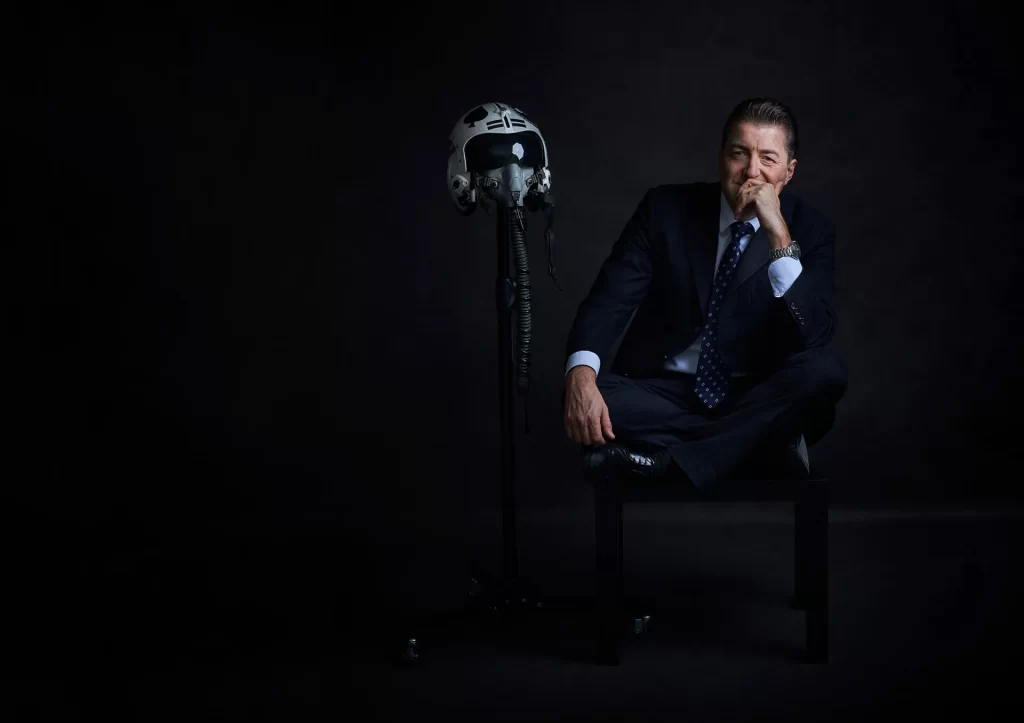
Starting with the feeling he felt at the age of 3 while holding the yoke of an aeroplane, his life has been marked by a passion for flight and space. His has been a brilliant career that led him from mechanical engineering to head of ESA’s Department of Mechanics. We met him before his inaugural lecture at the Additive manufacturing for Space application course.
Passionate and overwhelming in recounting the plans for human exploration on the Moon and Mars, he told us about the life of lunar ‘campers’, sustainable recycling, the benefits of 3D printers, the holograms that will keep the astronauts company in the three long years far from Earth, and the countless research projects underway.
He’s a scientist who always pushes the frontier of his research a little further, who casually recounts the near future of mankind as it prepares to be multiplanetary and tells young people to find their own way, follow enthusiasm and learn from failure.
What is your educational background and where does your fascination with space come from?
I attended a ‘liceo classico’, a high school specialising in classical studies. That was my real starting point, as it was an important stage in my education. I knew I wanted to study engineering later, but being a scientist today depends on that very school, as it was there where I learnt to ask questions, to investigate nature, to discover, to go beyond the Pillars of Hercules whether in science, humanities, poetry or medicine, whatever discipline. In the end, we are always looking for something, for answers to our questions. So that was a milestone for me. Afterwards, I studied mechanical engineering at the University of Parma, and I regret not studying at Politecnico, which for me has always remained as the beacon to follow; mind you, I’m not saying this because we are here talking now, I’m really being honest and sincere.
Flight and space had always been my greatest passion, but what changed my life professionally was meeting an engineer from the German Aerospace Centre, who later became my boss. The last year of my mechanical engineering studies he came for a lecture and I abandoned a compulsory lecture in the middle to run to where he was holding his – a run I still remember as if it were today. He introduced the German Space Centre, which to me seemed like the promised land: he said there was a competition with a scholarship, I entered and got it, and from there my career began.
The German Aerospace Centre opened up a whole world to me. It opened me up to the idea of research, it was there that I realised I wanted to attend a PhD programme: doing research is a real breakthrough because you put your first foot into unknown territory, where no one has ever been; it’s a feeling that stays with you, that you can’t describe if you haven’t experienced it! Being able to take your knowledge a little bit further, regardless of whether it’s 1 mm or 1 km, is a feeling that stuck with me like a cell and stayed with me and from then on I was completely dedicated to it.
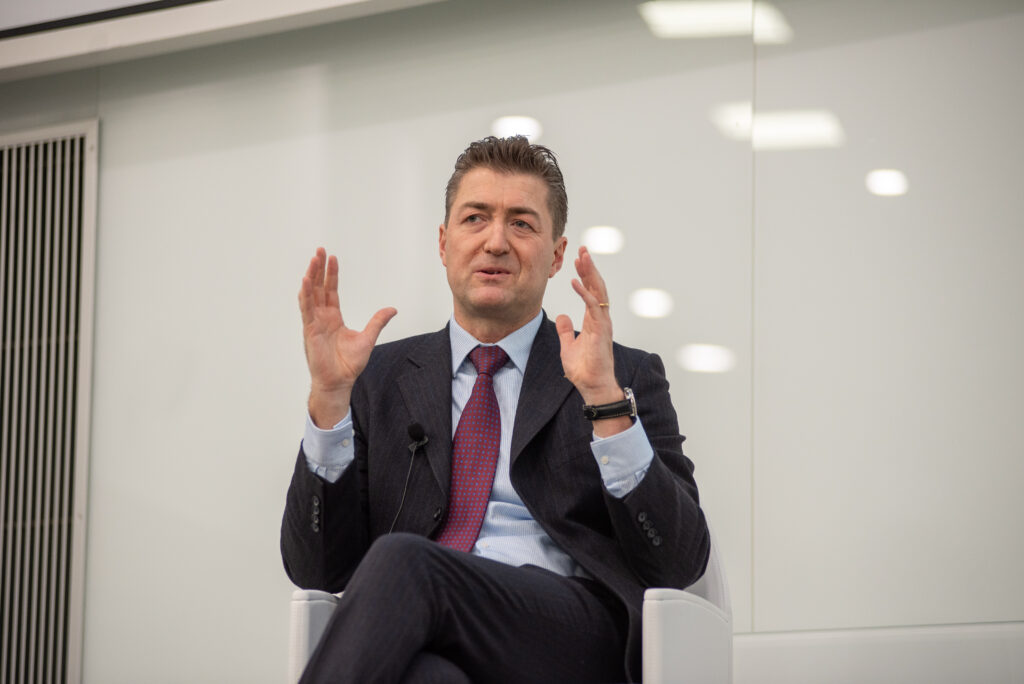
However, my passion for aviation and space emerged earlier. During the first flight of my life, at the age of 3, my father took me to visit the cockpit, the pilot had me sit on his lap and hold the yoke. I still feel my hands holding it, as if I shook hands with the love of my life… You know, that moment when time changes pace. I remember everything from that moment: I could see the clouds and I recall the pilot’s face perfectly, his voice – a low smoker’s voice – and I recall the lady who was next to me… it was one of those moments when your brain is recording everything. And from there on no doubt resisted, I no longer thought of anything else for myself. So much so that life turned into a huge library! Whatever experience I had, I looked for the connection to my goal, from the perspective of flight and space.
This is beautiful, thinking about that pilot and how much he impacted is simply amazing…
Exactly. I always say – even to my students – that when you do something, you should think about the impact that it can have on someone else’s life. That pilot gave me a gift, he changed my life. I even wrote it in my book, Homo caelestis, in the hope that that pilot would read it: I want to thank him, because he inspired the life of a child.
Do you feel this responsibility to inform about what you do, to inspire young people?
Yes, I feel this need to reciprocate the opportunity I have had. For example, the lectures I give here at Politecnico di Milano are not only a great honour, but also a way of giving young people what I would have liked to receive from the teachers I found along the way. Information, motivation, ability to choose, sense of confidence in the future, with one’s own means, with one’s own abilities. Everyone will then have their own story, for everyone there is a path. But it must be built with enthusiasm, because enthusiasm is contagious.
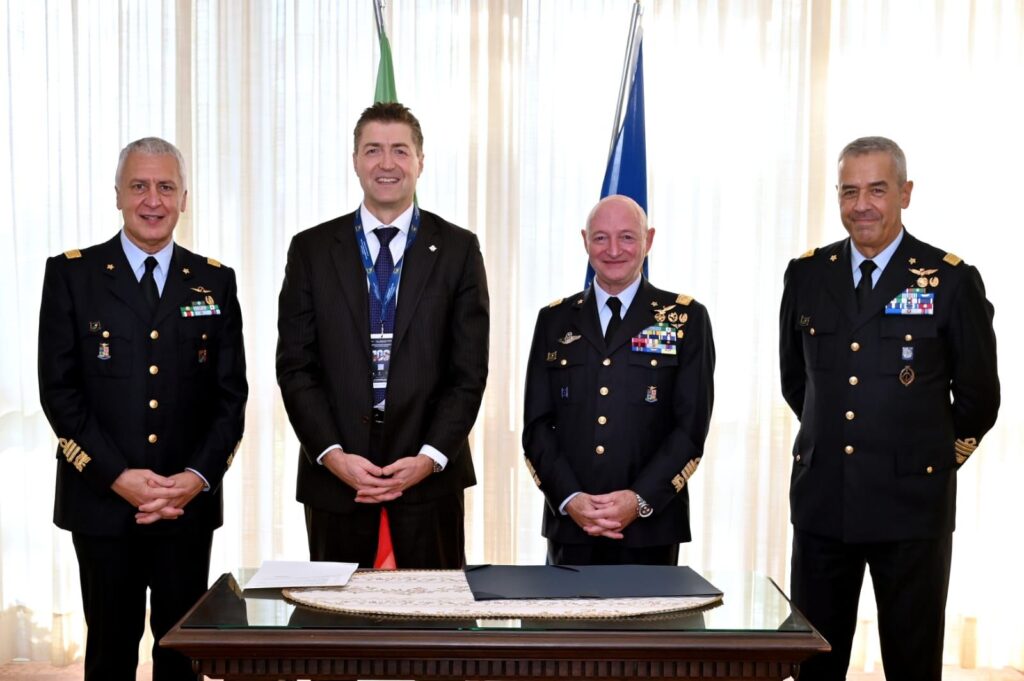
After all your training, you now head the Department of Mechanics at ESA. What areas of research are you involved in?
The department covers all the classical disciplines of mechanical engineering: structures, structural calculations, structural engineering, materials, processes, mechanisms, the thermal systems of all our satellites, spaceships, the whole part of robotics, optics, optoelectronics, Quantum Technology, Aerothermodynamic propulsion, the whole Life Science part… Each discipline has a division and each of them has its own set of laboratories and computer centres, so we deal with both the numerical and the experimental part. In addition, I am responsible for the ESA Test Centre, which is the largest centre in Europe where satellites and rocket parts in 1:1 scale are tested. We also have an artificial sun twice as powerful as the natural one to test satellites on a 1:1 scale in front of the sun. It is truly extraordinary, it is like Willy Wonka’s chocolate factory: when you open the gates, it feels like entering a parallel, fairy tale world!
It is a privileged position because, on the one hand, we provide engineering for all space missions (telecommunications, earth observation, space station, astronauts, exploration of the Moon and Mars, space science, navigation, exploration of other planets) and, on the other hand, we have a budget of around 330 million euros to develop technologies for future missions. So we see today’s space but also prepare that of the future.
We can also count on an acoustic chamber where we can test the noises made by the rockets. The noise is the deadliest thing of all: if you put a person into this chamber, he/she would die instantly. The chamber itself, which is made of about 800 tonnes of reinforced concrete, is suspended on a cushion of air, isolated from the rest of the ground, because it would vibrate the whole ESA and destroy all the buildings around it when testing.
What if something goes wrong?
We also have the function of Failure Investigation, which is one of the things I teach here at Politecnico and is also very popular with the students. It is like a space CSI, a Crime Investigation: whatever happens that is negative or unexpected, like a rupture or an explosion, we investigate to find out what happened. Doing this requires a special kind of engineer, namely one who, on the one hand, has great technical skills – because he/she has to apply reverse engineering and understand what happened, starting from some small, perhaps half-burnt fragments – and, on the other hand, respects the person who did the work. This combination of human and engineering skills is very rare to find, but we have a lot of engineers like that and I must say that the knowledge that comes from them is gigantic: you can understand what went wrong from them and you can learn how to solve that.
In a sense, it is also a different way of thinking…
Indeed. There you learn that you can create not only a company, but also a group, a team that has respect for failure and then stimulates people to talk about it, because the real revolution happens when there is a system that wants to learn from that failure and then shape notions, standards, guidelines, ways of working that start from what went wrong. That’s when the team becomes virtuous: not only does one feel ‘authorised’ to talk about the mistake one has made, but that mistake is also used for the benefit of all the others. This is more a philosophical way of dealing with engineering than a purely technical one, and we are standardising it.
Why do we go into space?
To seek answers. We are just built that way, whether in poetry, music, space exploration, medicine, science in general. We seek answers to our questions, Whether regarding our soul, our brain or science.
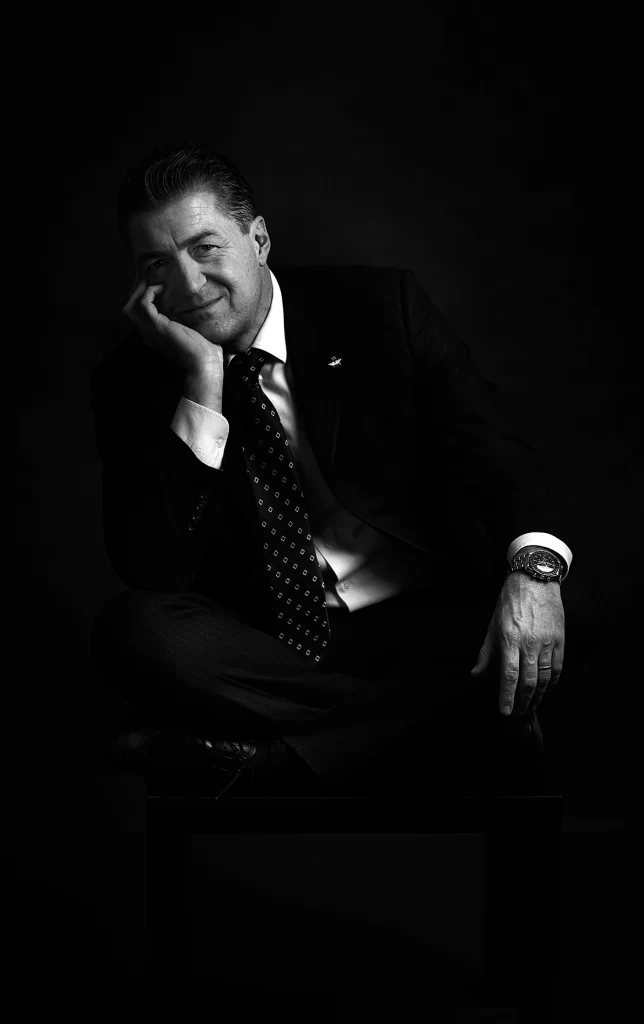
And today we are preparing to return to the Moon…
Yes, we are preparing to return to the Moon with a major paradigm shift. In 1969 mankind went there just to be there, because it was mainly a political competition, but now we are going back to the Moon to stay there. We are approaching something that for me is unprecedented: Homo sapiens, who was the first to consciously leave our planet, will be the first to become a multi-planetary species, the first to go and live elsewhere, even to build a home where life does not yet exist – to take one’s life, one’s loves, one’s ideals, one’s culture where life does not yet exist.
What is the timeframe for this?
The trajectory is written, it is precise. First woman on the Moon in 2025. International space station around the Moon by 2025, meaning astronauts on board by 2025, and then longer and longer surface missions with the perspective of even building a stable lunar base. There is still no planning for this latter element, because an extended political will is needed and it cannot be just Europe or the United States. It will have to be Europe, the United States, Russia, China, India, private investors… it has to be an activity involving the whole mankind and not just of one nation.
So it is the Moon first, then Mars…
Yes. As far as human space exploration is concerned, it has already been established that men and women will be on Mars by the end of the 2030s/early 2040s. Then there is a further novelty: the International Space Station, the one around the Earth, will no longer be for our use only, but will be mainly for commercial use. We want more and more commercial players to use this extraordinary infrastructure.
As an agency, we focus on moving our frontier, we are building an extraordinary telecommunications system called Moonlight: we will have Internet and astronauts will communicate from the Moon via Whatsapp. This is being multi-planetary, we have to get used to the idea that we will be elsewhere and this is an act of philosophy. This is where classical studies emerge before engineering ones: it is an act of philosophy, it is an ideological act, we must want it.
What will the first steps on the Moon be now?
The first to make their move will certainly be the Americans. We have tested the spaceship that will take them to the Moon launching it in an automatic unmanned flight, but the next one will have men and women aboard. They will not land onto the Moon, they will fly 70,000 km away from it – which is the furthest point a human being has ever reached. These men and women will be the true ‘explorers of the extreme’ and will return to Earth at very high speed to test the re-entry from Mars. For us, the Moon is in fact a perfect test for Mars, though it does not have the same risks due to being much closer. Later on, a third flight, which will be in 2025, will have four crew members aboard. Two of them, one man and one woman, will step on the Moon. A Native American will be involved and the first black person will step onto the Moon precisely to demonstrate that diversity is a value of humankind.
One thing I am very proud of is that for the first time ESA has selected a disabled astronaut missing a limb to go on a special mission. We have to start getting used to having disabled astronauts on board, to having spaceships that are compatible with disabled astronauts. Once again a message, in my opinion a very powerful one, just to say it is everyone’s space.
Once down on the Moon, what will the first two astronauts find and do?
They won’t find anything: they‘ll just have to start building. They will probably land at the South Pole, the most suitable area for a permanent settlement: there is water there, there are hundreds of thousands of tons of frozen water. We are developing technologies to de-ice it, as we see it with our radars but don’t know whether it is pure or mixed with soil. So, we are developing technologies to extract it. Water means life, means water to drink, but also oxygen to breathe and hydrogen to power the hydrogen cells so to make electricity; hydrogen and oxygen as propellants to send to the gateway, that is, to this space station we are building around the Moon to supply the ships that will go to Mars.
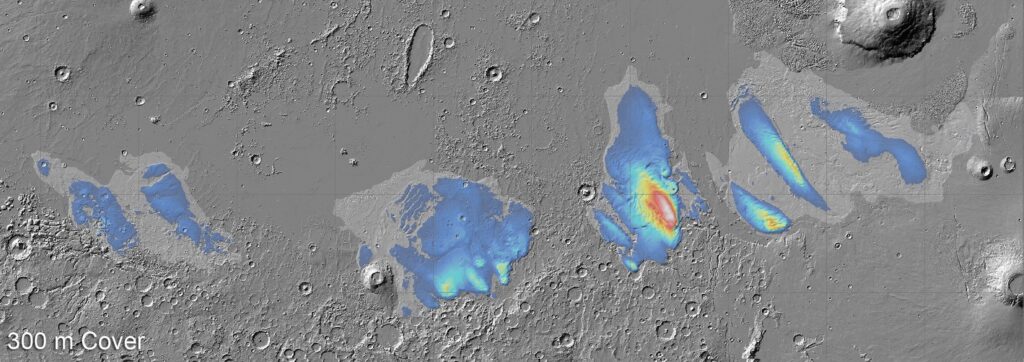
Furthermore, there is almost constant sunlight at the South Pole, so solar panels can be used to power the base. And then they will enjoy some sort of camping, that is, they will stay on the Moon with a lander that will have tools and instruments inside, like a kind of camper van. Gradually we will tend to increase our stay, until we reach a completely stable stay. And that’s where the complete paradigm shift lies: our mission engineering must on the one hand use resources in place and on the other hand aim at recycling.
We are already doing this. We have built a one and a half tonne lunar base block with a 3D printer using the sun as the energy source: the 3D printer bakes the regolith, which is already on the Moon, layer by layer and turns it into reinforced concrete. We extracted aluminium, titanium, iron and silicon from the lunar regolith and printed useful objects for that phase of the mission with 3D printers.
After that, we’re going for a systematic recycling. We’re going to recycle everything, whether it’s no longer needed materials from previous landers – which we’re going to turn into useful objects via 3D printers – or the regolith itself. In general, all kinds of waste will be considered, even human waste, which will be turned into methane to power the base; urine will be treated to become drinkable water, as we already do on the space station. In other words, we’ll count on a series of closed-loop technology to be completely self-sustainable.
And what about food? How will they secure it?
Food will be grown on the Moon and 3D-printed; for instance, steaks will be 3D-printed using cow stem cells.
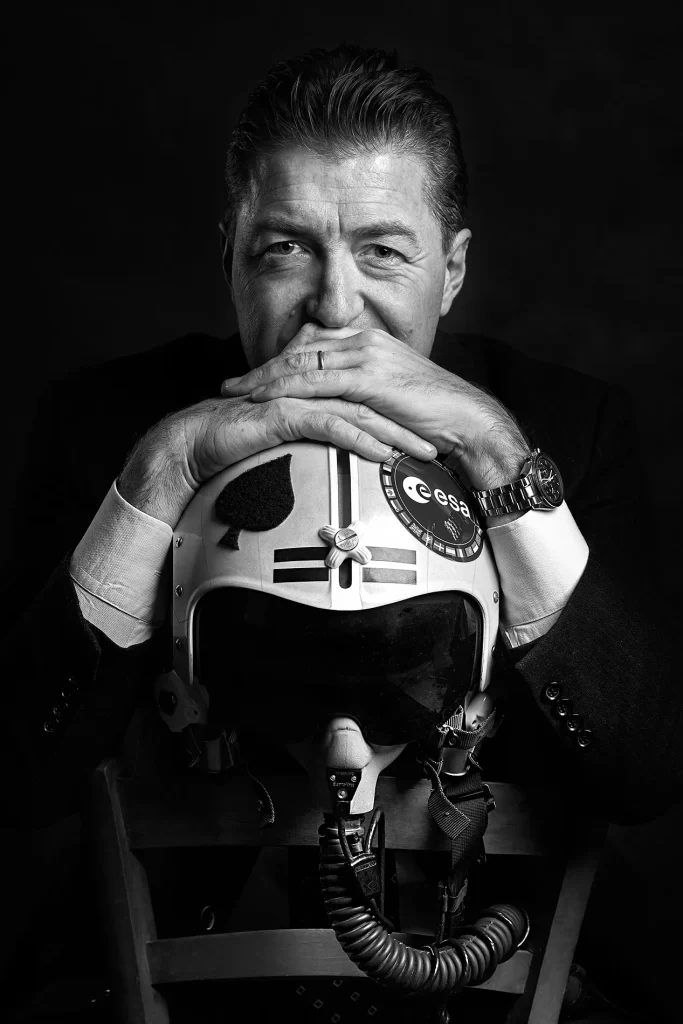
Is there other research you are working on?
A lot of it, first and foremost on all telecommunications systems. In this field our priority for the future will be protection, hence data protection. Nowadays we transfer all personal, financial, military, medical data, all via satellite systems. We must protect them. This means cyber security, but also infrastructure security.
Other future takes regard science. We have some extraordinary missions going on: Euclid was launched not much time ago, Plato is soon to be launched, then there’s James Webb Space Telescope, the space rockstar, the most extraordinary satellite we have built in the history of astronautics. All these missions and many more will answer the fundamental questions: where did the universe come from? Where is it going? Why is there life on Earth? Is there life elsewhere? Will we ever find it?
In addition, we are studying dark matter with Euclid. We can only see 5% of what exists, whereas 95% of it, which is dark matter and dark energy, is yet to be seen. Thanks to this, we will have a look at it. And then, of course, the priority is and remains the protection of our Earth, hence increasingly precise satellite systems to monitor all 50 variables of climate change.
Speaking of satellites, what do you plan to do with all the satellites circling in space?
I admit we have been very little virtuous over the years, because we have polluted the low orbits and now we have some 3,800 inoperative satellites completely out of control. So what we are going to do is to grab these satellites, take them to the Moon and use them as building material, then build our new ‘house’ in a completely recycled manner. Of course it has a certain cost, but they are already in space and we just have to reposition them. They are very valuable materials, because they are already qualified for space, they are made of noble materials such as titanium, stainless steel, aluminium.
Of the ESA challenges you have participated in, which one has excited you the most?
There are many, but the first is the countdown to the launch of Vega, a rocket to which I have dedicated so much of my career, on 13 February 2012. The countdown is something that lingers within your soul, those numbers never seem to turn… it seems like 2 eternally stays 2, then comes 1, then zero and… there you feel lightness, you feel joy as you see this rocket flying well. The first thought I had was actually: ‘it flies well!’ An extraordinary hour and a half of flight followed. Everything is there, those moments are worth a whole eternity.
Other beautiful memories are then tied to the moments when our science satellites give us extraordinary photographs, for example when we saw the Rosetta comet for the first time or when the Planck satellite managed to photograph the light after the Big Bang, the first light of all time. That one is still travelling in the universe and we managed to photograph it. You see future galaxies there; in other words, you look back 14 billion years in time and you see a picture of the baby universe – as well as how the universe will be. It is really exciting: the idea of looking back in time and seeing the future at the same time is extraordinary.
What do you teach here at Politecnico di Milano?
I teach Additive manufacturing for space applications, which for us is an enabling technology. In collaboration with NASA we did an experiment: we had a 3D printer on the station, we sent an e-mail with the design and the design materialised there. It is some kind of teleportation in the end, as that object was never launched: it was just sent by e-mail and then materialised.
Instead of launching all the possible spare parts, we just launch a 3D printer and some powdered material and if there is a problem, Houston will e-mail a drawing to Mars and the printer will materialise the part we need. This will make the real difference between life and death on missions so far from Earth.
In this respect, how long will the Mars mission last?
The journey there and back will take two and a half years and six months on the surface. So the mission in total will last three years. And those who go will be martyrs, because that flight is devastating, they will have a very strong physical and mental decay.
But there is nevetheless a queue to leave…
Yes, lots of people. We did an experiment called Mars 500 because 500 is the number of days we kept six astronaut analogues – so not real astronauts who have flown before, but who possess the same requirements – inside a pseudo spaceship box, with all the limitations of such a flight. The thing that impacted them most psychologically was the lack of nature. Homo sapiens is designed to be surrounded by nature, otherwise he suffers. Not only will these astronauts no longer see nature, they will no longer see the Earth; no one in history has ever lost sight of the Earth, ever, so they will be completely disoriented; then perfect sunlight, vertical three-body and mind decays, the prolonged effect… All of this causes cabin fever, leading to suicide and murder.
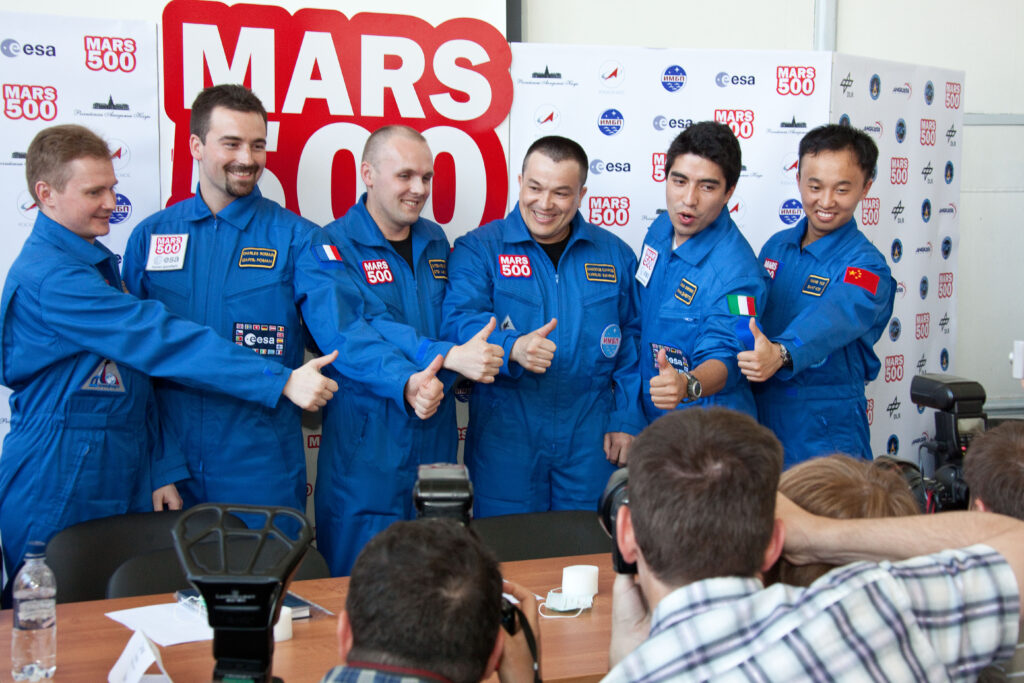
How will they communicate with the Earth?
They will be able to communicate with a latency of 40 minutes, so imagine the nervousness of having to wait 40 min for a reply… We have therefore developed ways to dilute time, they must never lose their sense of purpose, their sense of responsibility and their sense of utility. We keep them busy with activities for those 40 minutes, to give them the idea that time is diluted.
And how will they overcome homesickness?
With holograms! Already six years ago in a research centre they showed me a hologram of Frank Zappa singing a song that he had never written but in a manner and attitude that was entirely plausible in relation to his entire video production. This means that you can also leave your personality behind. And this is sought to help astronauts on Mars, but at the same time it will help us. I find it extraordinary and at the same time frightening, because they will have their wife or husband, with whom they can play cards and interact; not a pre-recorded video, but figures who will have contextualised reactions based on what is happening on the spaceship. It will not be a fake video, it will be a plausible reaction of the wife’s/husband’s personality when confronted with that question.
Would you go to Mars?
Yes, immediately! If they told me that I have two hours to prepare, I would leave right away! Yes, because that experience is worth all of Neil Armstrong – though to the nth degree. Not least, because Mars is habitable: it isn’t yet, but it has been and it can be. There you are telling mankind: ‘we are the aliens!’ It is I who can bring my life into the solar system. There’s no other goal in my career: the challenge is really to take our human being elsewhere.
